Non-fungible token (NFT) marketplace OpenSea.Florence Lo/Reuters
Julia Huang is still surprised she pillaged her savings account to spend US$10,000 on a cartoon. For her money, she received ownership of a digital file – specifically, an illustration drawn by Scott Martin, an artist from Hamilton. It was one of 10,000 drawings he and two business partners released last October as part of a collection of nonfungible tokens, or NFTs, under the name Doodles. The series sold out within minutes. Since then, more than US$520-million worth of Doodles have traded hands, making it one of the most popular NFT collections in the world. Today, the cheapest Doodle will run a buyer about $13,500, while the most expensive one sold for US$1.1-million.
Ms. Huang, a 26-year-old designer in Washington, heard about NFTs long before they were popular. An NFT, she learned, represents a one-of-a-kind digital asset, often a graphic, whose ownership is recorded on a blockchain, a decentralized ledger of sorts. She was intrigued by how the technology could help artists generate income, but never purchased anything big until a friend told her about Doodles. She loved the playfulness of Mr. Martin’s drawings, each depicting a different character rendered in thick black lines and bathed in soft pastel hues, often with blank, round eyes not quite attached to their heads. Some of the rarest and thus most desirable Doodles feature characters spewing rainbow vomit. And so last November, Ms. Huang made the most expensive purchase of her life when she nabbed a Doodle with flowing pink hair, a hoop earring and a U-shaped smile. “This is the most insane thing that I’ve ever done,” she says.
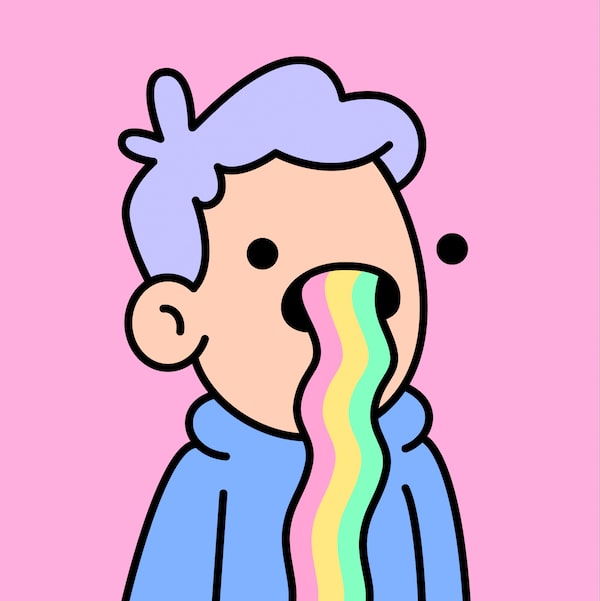
Some of the rarest and thus most desirable Doodles feature characters spewing rainbow vomit.Doodles/Handout
Ms. Huang doesn’t think she’ll ever resell it. She talks about her Doodle as part of her “personal journey,” saying it rekindled her creativity and led her to pursue her own art project illustrating her Doodle in new settings. She’s become close friends with fellow holders online, and met up offline at Doodles events in Miami, Austin and New York. “I feel like I’m a Doodles groupie,” she says.
The success of Doodles surprised Mr. Martin as well, and it’s been a strange time for him since the project launched. “It’s like a new life, but it’s at the cost of my old one,” says Mr. Martin, who previously completed artistic commissions for companies such as Google and Dropbox. In NFT circles, he’s better known by his online alias, Burnt Toast. Co-founder Evan Keast, also Canadian, is known as Tulip. The third founder, Jordan Castro, goes by, uh, Poopie. In the past few months, they’ve hired a chief executive, started to raise venture capital, and accrued celebrity fans such as DJ Steve Aoki and Pharrell Williams, who joined as a board member. The founders are determined to turn Doodles into a bona fide business, with licensing deals, consumer products, animated content, an album, live events and many, many more NFTs.
But after exploding in popularity last year, the NFT market is in the dumps. Sales volume plummeted from US$5.7-billion in January to $903-million in July, according to data tracking firm DappRadar, while transactions fell about 50 per cent to 5.9 million. Not even “blue chip” NFT projects – so named because the founders have a track record, or, at the very least, a plan – are immune. The JPG NFT Index tracking such projects has crashed 50 per cent since April, while the floor price of a Bored Ape, cartoon drawings of morose simians often flogged by celebrities, has been cut in half. (The term refers to the lowest price for an NFT associated with a collection). OpenSea, the largest NFT marketplace, slashed 20 per cent of its staff in July.
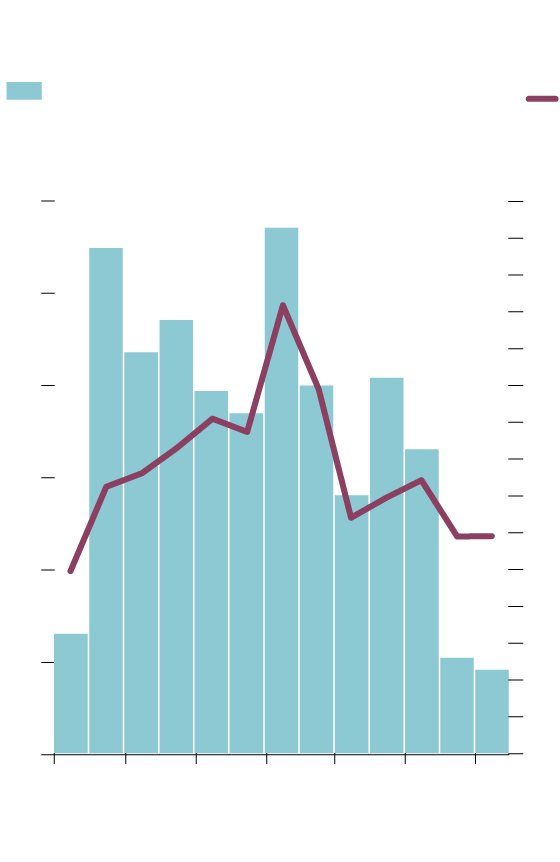
NFT sales volume and number of
transactions from July, 2021 to July, 2022
Sales
(billions of US$)
Transactions
(millions)
$6
15
14
13
5
12
11
4
10
9
8
3
7
6
2
5
4
3
1
2
1
0
0
July
2021
Sept.
Nov.
Jan.
2022
March
May
July
THE GLOBE AND MAIL, SOURCE: DAPPRADAR
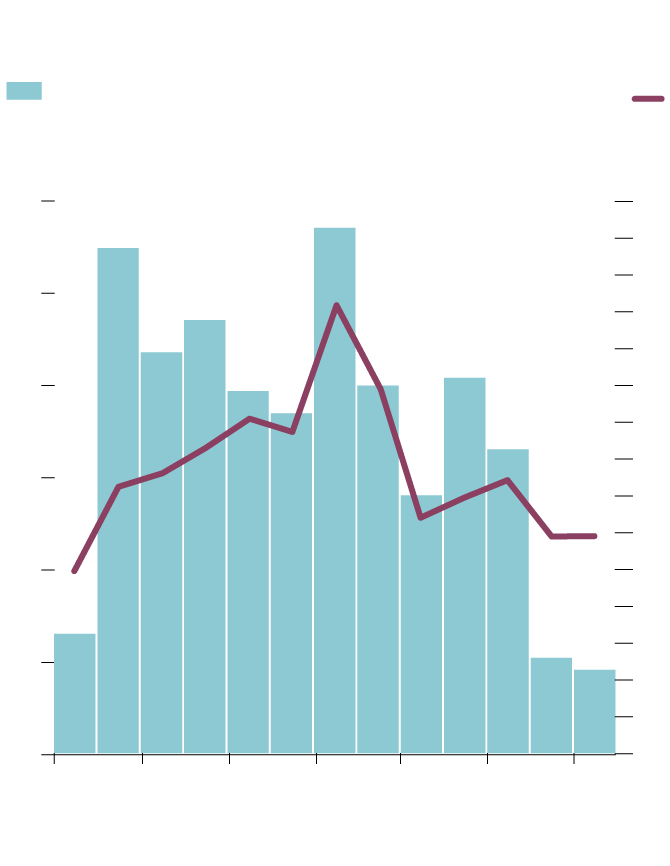
NFT sales volume and number of
transactions from July, 2021 to July, 2022
Sales
(billions of US$)
Transactions
(millions)
$6
15
14
13
5
12
11
4
10
9
8
3
7
6
2
5
4
3
1
2
1
0
0
July
2021
Sept.
Nov.
Jan.
2022
March
May
July
THE GLOBE AND MAIL, SOURCE: DAPPRADAR
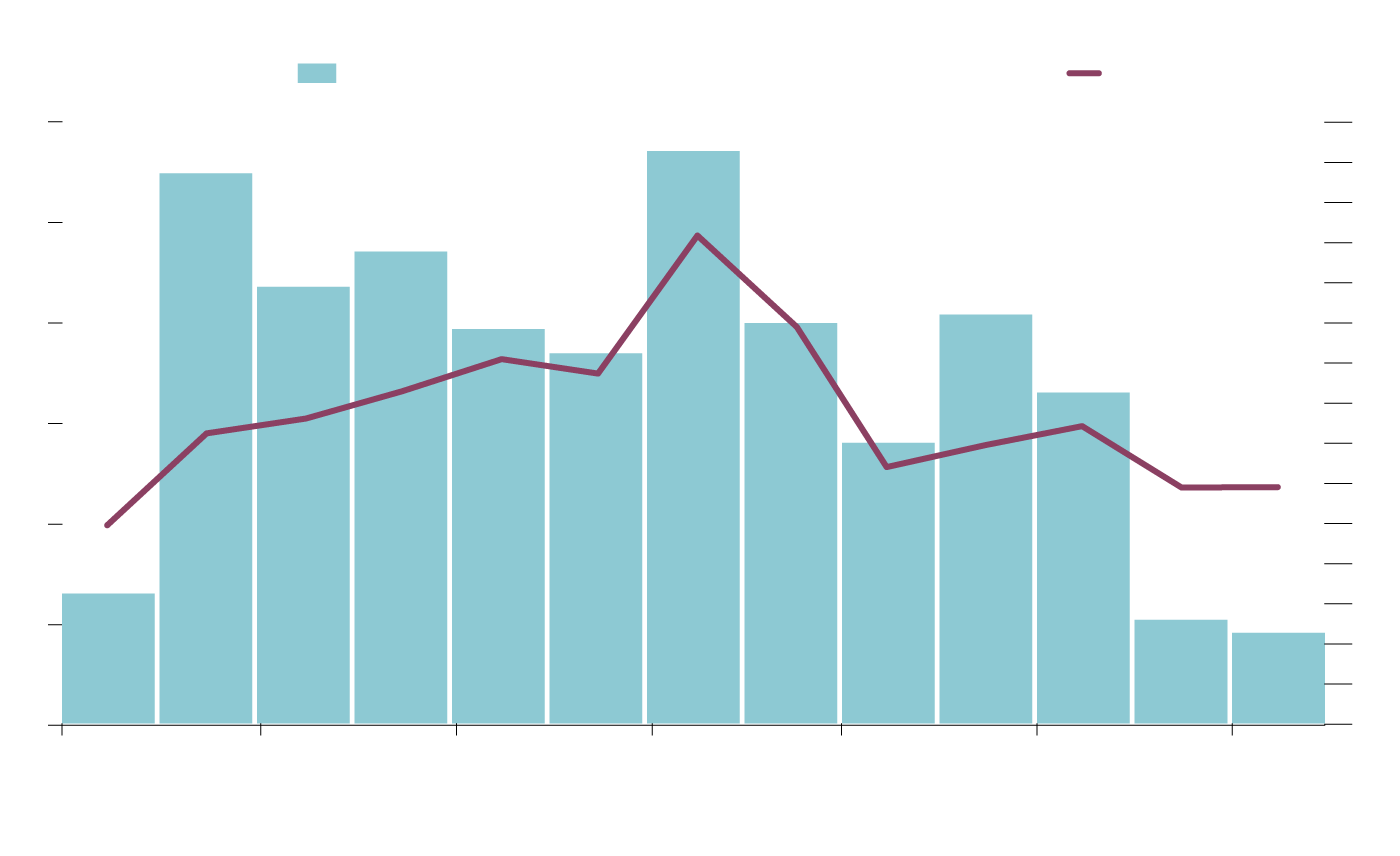
NFT sales volume and number of transactions from July, 2021 to July, 2022
Sales (billions of US$)
Transactions (millions)
$6
15
14
13
5
12
11
4
10
9
8
3
7
6
2
5
4
3
1
2
1
0
0
July
2021
Sept.
Nov.
Jan.
2022
March
May
July
THE GLOBE AND MAIL, SOURCE: DAPPRADAR
The decline follows the wider crypto crash. NFTs are typically transacted in ether, a cryptocurrency that has fallen about 55 per cent against the Canadian dollar this year. On top of that, the world is experiencing rampant inflation with economies teetering on recession. Investors are looking for safe havens, and it’s hard to think of a riskier asset than a JPG. “The bubble has burst, or still has to burst,” says Pedro Herrera, head of research at DappRadar. “Ninety to 95 per cent of the projects that we currently see in the market, in two years, will be worth close to zero.”
With values crashing, proponents are talking a lot more about “utility” these days, an effort to bring some kind of broader functionality to NFTs. Until now, NFTs have commonly been used for digital art and collectibles, held in a wallet in hopes of appreciating in value. It amounts to speculation. Indeed, to many people, NFTs are the most egregious example of tech-fuelled bluster and irrational greed run amok. Recently, Microsoft co-founder Bill Gates pointed to the “greater fool” theory to describe NFTs (and crypto more broadly), which posits investors can make money on the most worthless asset so long as someone else is gullible enough to buy it at a higher price.
But proponents argue NFTs can be used for so much more – as entry passes to events, keys to obtaining exclusive merchandise, digital assets inside video games and applications yet to be dreamed up. For Doodles, it comes down to this: How much can you do with a picture of rainbow vomit?
The first time most people heard the term “nonfungible token” was likely early last year, when people spent hundreds and then thousands and then hundreds of thousands of dollars to own the equivalent of animated GIFs culled from professional basketball games. In 2020, Vancouver company Dapper Labs partnered with the league to launch NBA Top Shot, a marketplace for digital basketball collectibles. It’s now a case study of the fickleness of NFT investors.
Top Shot NFTs – or “moments,” as Dapper Labs called them – initially traded for a few dollars each. Jesse Schwarz, a 33-year-old entrepreneur from Montreal now based in Los Angeles, spent a few thousand dollars on Top Shot over a few months in 2020, partly as a lark. “It’s always the things that seem stupid at first that end up being the biggest things in the world,” he says. As a kid, he traded Pokemon cards and sneakers, and for him, digital collectibles had an immediate appeal.
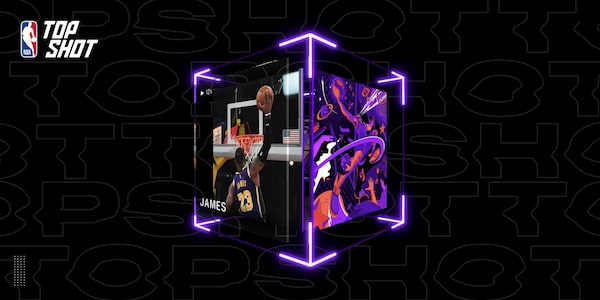
Sports trading cards have gone convincingly virtual thanks to a clever use of the technology that underlies Bitcoin and similar cryptocurrencies. The Dapper Labs Top Shot virtual collectible cards are digital cubes that each feature a video highlight of an NBA player.The Associated Press
Mr. Schwarz became skilled at flipping Top Shots – and he wasn’t the only one. In October, 2020, there were just 19,689 Top Shot transactions, for a dollar volume of US$835,451, according to NFT data site CryptoSlam. A speculative bubble then rapidly inflated, brought on by a combination of hype around a new technology, pandemic boredom and a kind of infectious mania already in the air from meme stocks. By March, 2021, there were more than 1.3 million trades, and volume surged to more than $208-million. At first, the most Mr. Schwarz paid for a single Top Shot moment was $180. “And then, two months later, I was spending $200,000,” he says. “It’s crazy how fast it creeps up on you.”
Specifically, he dropped US$208,000 on a clip of LeBron James practically soaring over another player for a slam dunk. It was a somewhat impulsive purchase. He was sitting on cash from selling other NFTs and wanted a “big fish,” he recalls. Everything was going up in price. He’d been a huge LeBron James fan since he was 14 years old. So, well, why not? “It felt like a deal,” he says.
Today, Mr. Schwarz does not exactly have buyer’s remorse. He still owns the NFT and it’s part of his online identity. He even set up the website lebron.com to commemorate his purchase. But Top Shot peaked around that time. “They dropped the ball on a lot of things,” he says of Dapper Labs. He faults the company for having too little supply at first, which pushed prices up, and then too much supply later on, which drove prices down. More crucially, Dapper Labs couldn’t maintain interest. “Attention just shifted to other NFT projects,” Mr. Schwarz says.
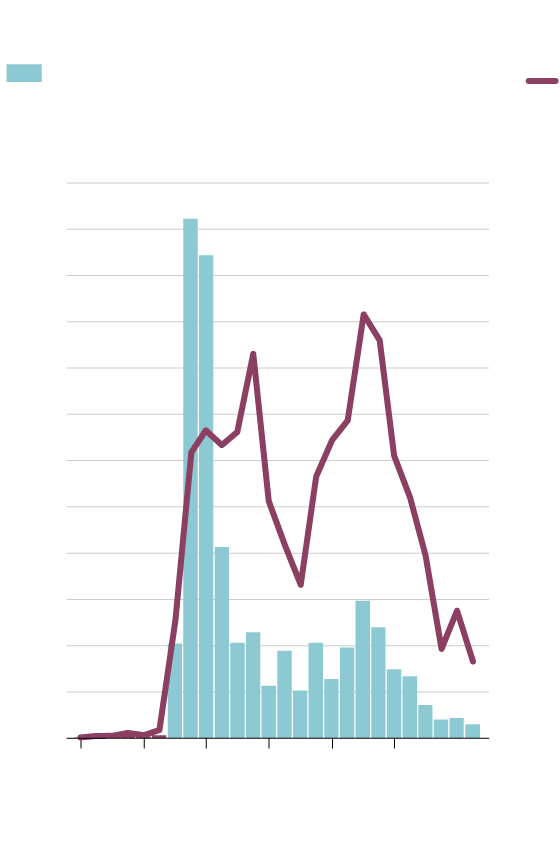
NBA Top Shot sales volume
Sales
(millions of US$)
Transactions
(thousands)
2,400
$240
2,200
220
2,000
200
1,800
180
1,600
160
1,400
140
1,200
120
1,000
100
800
80
600
60
400
40
200
20
0
0
July
2020
Nov.
March
2021
July
Nov.
March
2022
THE GLOBE AND MAIL, SOURCE: CRYPTOSLAM
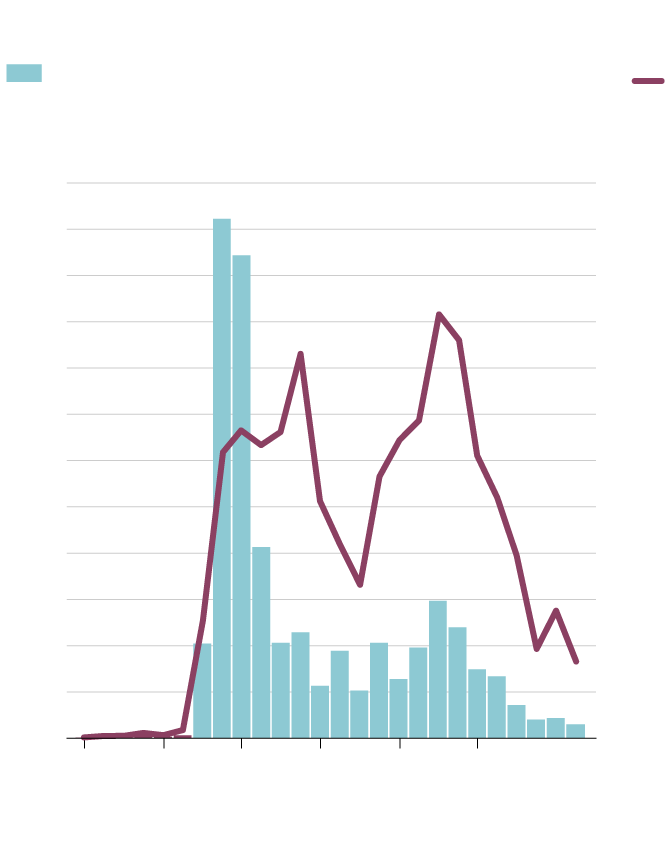
NBA Top Shot sales volume
Sales
(millions of US$)
Transactions
(thousands)
2,400
$240
2,200
220
2,000
200
1,800
180
1,600
160
1,400
140
1,200
120
1,000
100
800
80
600
60
400
40
200
20
0
0
July
2020
Nov.
March
2021
July
Nov.
March
2022
THE GLOBE AND MAIL, SOURCE: CRYPTOSLAM
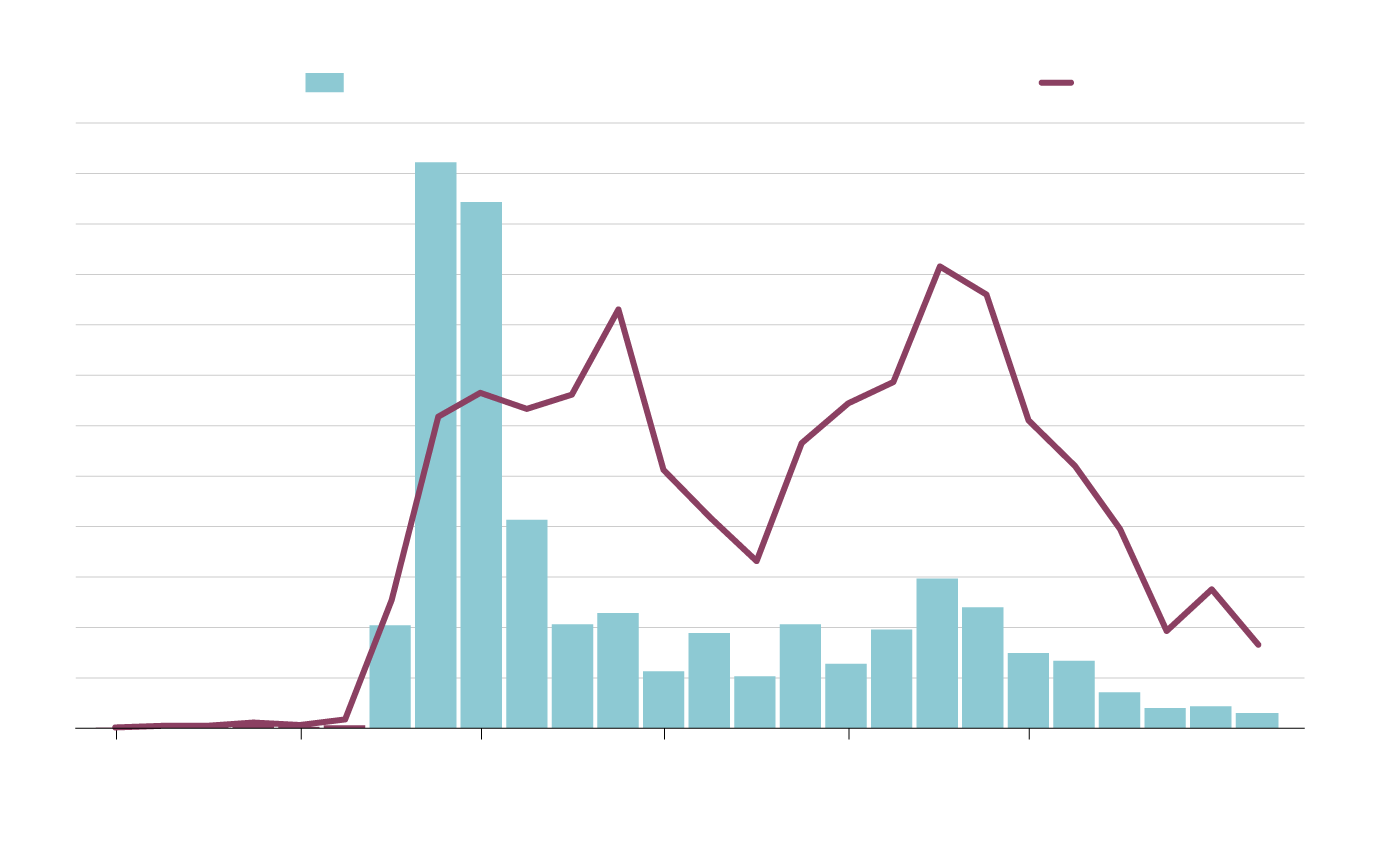
NBA Top Shot sales volume
Sales (millions of US$)
Transactions (thousands)
$240
2,400
220
2,200
200
2,000
180
1,800
160
1,600
140
1,400
120
1,200
100
1,000
80
800
60
600
40
400
20
200
0
0
July
2020
Nov.
March
2021
July
Nov.
March
2022
THE GLOBE AND MAIL, SOURCE: CRYPTOSLAM
As of July, 2022, Top Shot transactions are down close to 60 per cent from a peak in 2021, while the number of unique buyers fell 90 per cent. Sales volume, meanwhile, collapsed by 96 per cent.
Dapper Labs disagrees with Mr. Schwarz’s assessment. “What’s happening now in the market is consumers are coming to products that aren’t built to be speculative in nature, but rather are built for long-term value like Top Shot,” said Jayne Peressini, general manager of Top Shot, over e-mail. “We believe we’re just scratching the surface on what’s possible with the utility of NFTs.” To that end, Dapper Labs has been bringing holders to games and arranging meet-and-greets with players. It also provides a monthly budget to “captains” (really engaged Top Shot holders) to run events, hold watch parties and organize giveaways for other holders. Volume is picking up, Ms. Peressini noted, while Top Shot has been “holding back supply to increase value.”
Mr. Schwarz, for all his criticisms, did sell a Top Shot for $15,000 recently. “It’s not dead,” he says. “This correction is healthy. Things just can’t go up forever.”

Illustrator Scott Martin draws on a book cover at a Doodles NFT.NYC 2022 event.DREW GURIAN/Handout
With the NFT market in a slump, there is a lot of pressure on the founders of Doodles. “I feel a great sense of responsibility,” illustrator Scott Martin says. “I’m aware of the fact that people can lose money, and that’s concerning.”
Now 35, he never thought art could be a career. He grew up in Greensville, Ont., just outside of Hamilton, and has been drawing for as long as he can remember. He was influenced by cartoons such as The Simpsons and Rugrats, borrowed tropes from skateboard culture and melded it into a style that combines silliness with cynicism. A cartoon called Mitosis is a typical example: conjoined twins set against a pink backdrop, one serenely detaching the other with a large knife. (Mr. Martin, incidentally, has a twin brother).
He studied 3-D animation at Humber College and took a job at a local television station, using his skills to put together used car commercials. Meanwhile, he posted his illustrations to Instagram, and built both a fan base and a freelance career. In 2020, a friend and collaborator encouraged him to sell his work as NFTs. His first attempt netted a few thousand dollars. “The more exciting part was just knowing somebody would want to pay for my work without actually being able to hold it,” he says.
One of the people who took notice of his work happened to be his eventual business partner, Evan Keast. A native of Vernon, B.C., Mr. Keast worked in civil engineering after graduating from the University of Calgary, but left to start a number of ventures that attempted to jump on cultural trends – including a Donald Trump chew toy for dogs and a service for breaking up with people. In a way, he became someone who specialized in capturing attention for ephemera, even working on a mobile app and e-commerce strategy for a wildly popular Instagram meme account whose name cannot be printed here.
Later, he was hired at Dapper Labs and worked in marketing for CryptoKitties, an early NFT project, where he met Jordan Castro, the third Doodles co-founder. He left in just under two years. “The space at the time was not that exciting,” he says. But then NFTs blew up, and early last year, he and Mr. Castro started developing their own project. They had a few illustrators in mind, but Mr. Martin’s work stood out. “We were just sick of seeing all this trash coming out,” Mr. Keast says of other NFTs. “We wanted to change the quality level.”
Over the next few months, they mapped out Doodles – deciding how much rainbow puke there should be, how many different hairstyles and what kinds of facial expressions – and Mr. Martin drew each element. Only 100 Doodles were completed entirely by hand. The rest are generative, meaning a computer script randomly assembled the various components to create new characters.
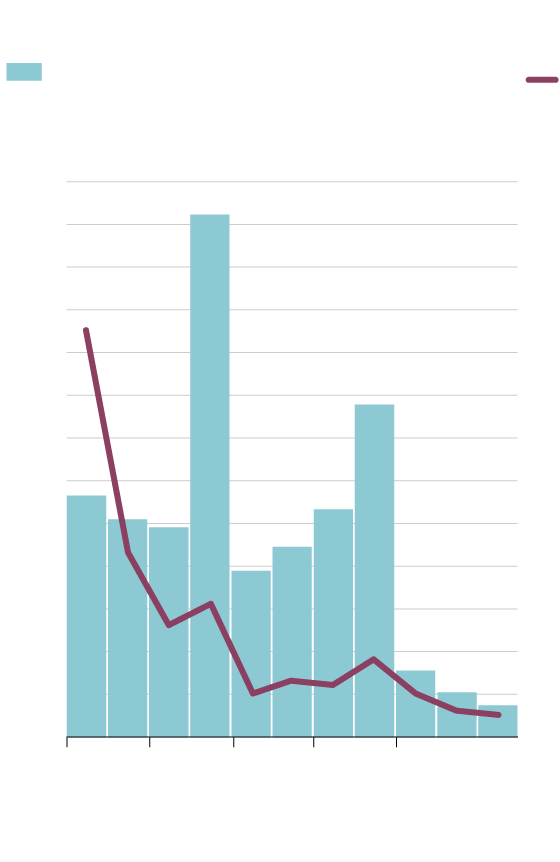
Doodles sales volume
Sales
(millions of US$)
Transactions
(thousands)
$130
13
120
12
110
11
100
10
90
9
80
8
70
7
60
6
50
5
40
4
30
3
20
2
10
1
0
0
Oct.
2021
Dec.
Feb.
2022
April
June
THE GLOBE AND MAIL, SOURCE: CRYPTOSLAM
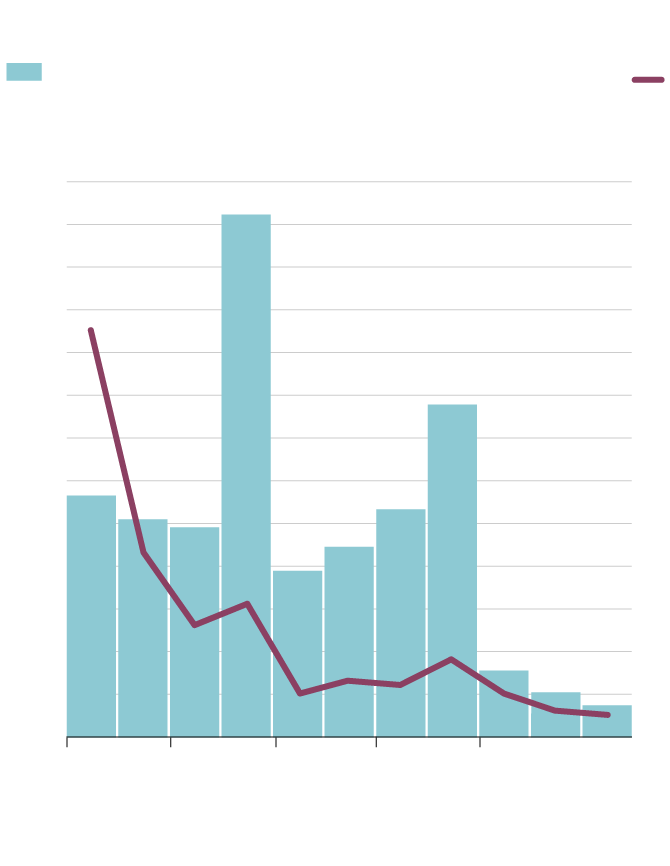
Doodles sales volume
Sales
(millions of US$)
Transactions
(thousands)
$130
13
120
12
110
11
100
10
90
9
80
8
70
7
60
6
50
5
40
4
30
3
20
2
10
1
0
0
Oct.
2021
Dec.
Feb.
2022
April
June
THE GLOBE AND MAIL, SOURCE: CRYPTOSLAM
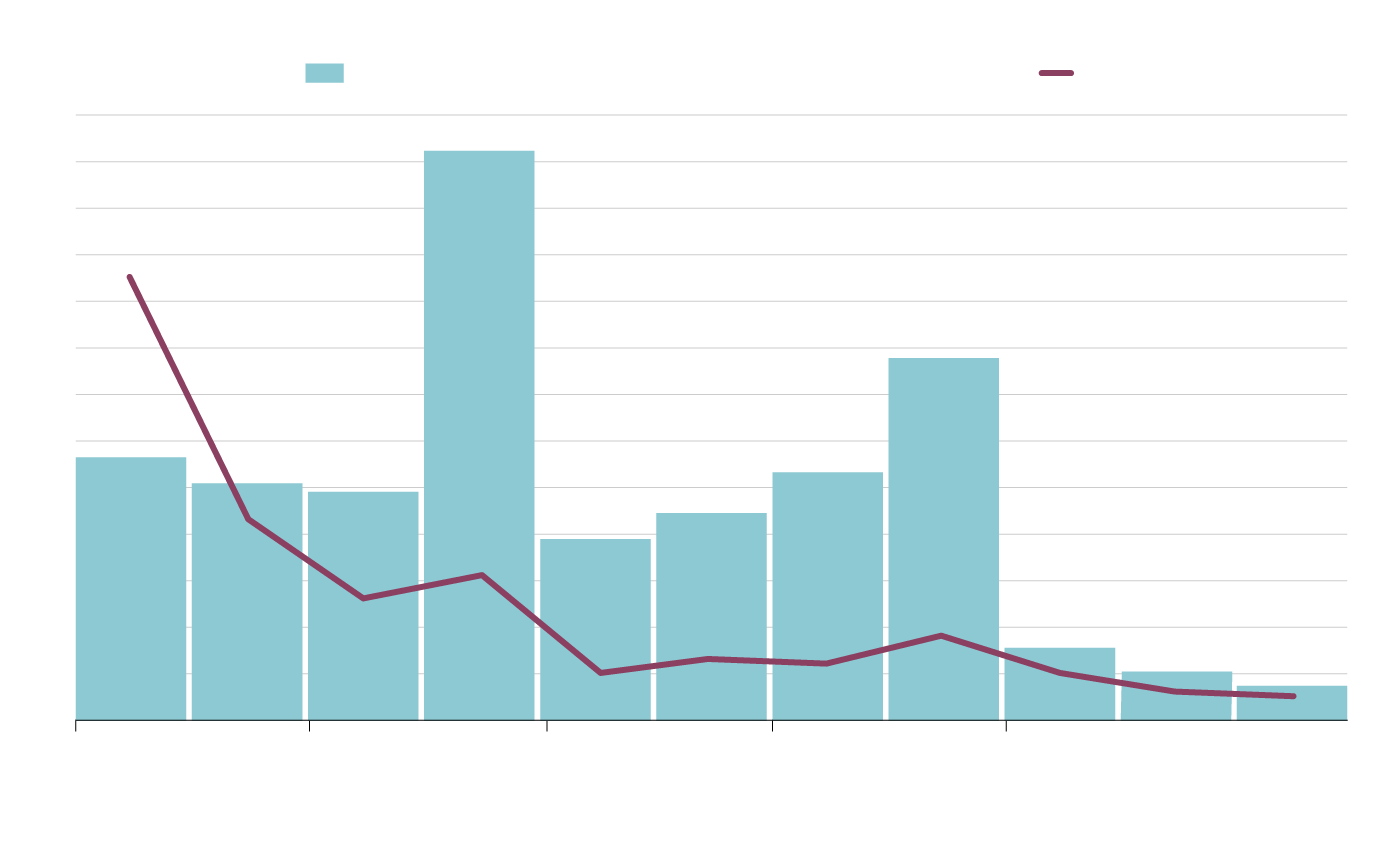
Doodles sales volume
Sales (millions of US$)
Transactions (thousands)
$130
13
120
12
110
11
100
10
90
9
80
8
70
7
60
6
50
5
40
4
30
3
20
2
10
1
0
0
Oct.
2021
Dec.
Feb.
2022
April
June
THE GLOBE AND MAIL, SOURCE: CRYPTOSLAM
The collection went on sale in October, each one priced at about US$475. Mr. Martin was on a Zoom call with his two partners, watching as the number of NFTs available for purchase quickly ticked lower. Within a few minutes, they were all gone. The sale resulted in a windfall, and Doodles receives a 5-per-cent royalty on transactions through major NFT marketplaces. On OpenSea, the largest marketplace, the original Doodles collection has generated about 7,335 in ether, the cryptocurrency, which is worth around $15-million today. Royalties are split between the company (officially, it’s called Doodles LLC) and a community treasury, which also helps fund the project.
Buyers who got in early were able to make huge gains, too. The process is not unlike an initial public offering, where those with insider knowledge and connections come out ahead. Some Doodles holders told me they learned about it before it launched through so-called alpha groups, where NFT holders trade tips on coming projects.
Joe, a 36-year-old in Ohio, heard about Doodles when Mr. Keast popped into a members-only online group to say he was working on something new. (The Globe is identifying Joe by his first name only, because he is uncomfortable speaking publicly candidly about his finances). He had been trading NFTs for a little while, and since he’s a management consultant, he created a slide deck to outline what makes a long-term hold instead of a quick flip. In his “NFT Success Framework” Joe looks at three main traits: the team’s track record, how much effort is put into the art and whether there’s anything unique about the project. Doodles hit all three, in his view.
Because Joe found out about Doodles early, he was able to join the group’s private Discord server before it closed to new members. As part of the exclusive club, he and his investment partner were each given access to purchase five Doodles just before the public sale. Later on, they resold four of them and pocketed a US$125,000 profit. The thrill of such a win is part of the appeal, but so too are the bragging rights: “I just want to be able to say to people that I was an early investor,” he says.

Doodles CEO Julian Holguin speaks at the NFT.NYC 2022 conference. In May, Doodles hired Holguin, who previously headed music publication Billboard.Handout
Reddit co-founder Alexis Ohanian, who runs a venture capital firm called Seven Seven Six, is also a Doodles holder, having purchased four depicting a girl who reminded him of his daughter. He was so taken with the collection that his firm is raising the first round of financing for Doodles, and his founding partner, Katelin Holloway, joined the board of directors. (The financing has yet to close).
Earlier in her career, Ms. Holloway worked as a script supervisor at Pixar, and she’s taken to calling Doodles the “Disney of Web3.” In her view, Doodles will be an entire entertainment universe – ”a household brand where your kids are wearing diapers with Doodles on them,” she says – though the Web3 component is where things get murky. The term refers to a new, decentralized vision of the internet that replaces giant platforms such as Facebook and Twitter. Instead, proponents foresee an internet incorporating blockchains, cryptocurrencies and NFTs, where users have both a financial stake in, and more control over, how web communities function. Web3 has also been derided as a meaningless buzzword, a ploy to garner attention and investment.
In May, Doodles hired a CEO named Julian Holguin, who previously headed music publication Billboard. At a recent NFT event, he too talked about Doodles as a budding entertainment franchise that takes a “blockchain and Web3″ approach while “leveraging traditional media and experiences to on board; on-board new people to our community.”
Like any NFT project, Doodles has to accomplish two main tasks to ensure that it has any kind of longevity: provide value for existing holders, and convert more people into fans.
Some of its plans, though lacking in specifics, are easy to comprehend, such as video games or an animated film or series. Doodles wants to host events where holders are granted VIP access, and sell merchandise. (It’s previously sold T-shirts, hoodies, tote bags and a US$350 figurine). And earlier this year, Mr. Holguin used his industry connections to recruit musician Pharrell Williams to join the Doodles board and serve as chief brand officer. (“I flew down to L.A. to meet Pharrell, just to see if we vibed,” Mr. Martin recalled. They vibed). Work is under way with Mr. Williams and Columbia Records to produce a Doodles album that, for reasons as yet unclear, will be released as an NFT.
Other ideas remain frustratingly abstract. For a planned NFT collection that will be offered at a lower price to appeal to more people, the team has suggested that owners will be able to purchase wearables for their Doodles and select music for them to listen to. I tried to make sense of this with Mr. Martin, but failed. “It’s like a digital character that you can dress and pose and switch emotions,” he said. “It’ll make more sense when the metaverse is more mainstream.”
Strip away the Web3 bafflegab, and the Doodles strategy amounts to brand extension built on Mr. Martin’s illustrations. If that’s the case, why does Doodles need to have an NFT component at all? Entertainment franchises have been built for decades without the sweaty hype of nonfungible tokens. Mr. Martin made the case that new technology unlocks creative potential, begetting new intellectual property. Would Mickey Mouse exist without the advent of animation? Would Mario Bros. exist without Nintendo’s home gaming system?
When I asked Ms. Holloway the same question, she paused for a moment before asking, “Why not NFTs?” As she went on, her answer had less to do with any unique characteristics of NFTs and more about capturing attention. “There was an opportunity they saw to take the art and apply it to something that a niche group of people were incredibly passionate about,” she says. They could have gone about it another way, sure, except for one thing: “There’s no way that they would make the money that they made.”

Doodle founders, from left: Evan Keast, Scott Martin, Jordan Castro, and CEO Julian Holguin.DREW GURIAN/Handout
The Doodles team are not the only ones seeking to expand the applications for NFTs. The technology has been touted as a way to do all kinds of tasks more efficiently, such as providing more visibility and traceability into supply chains, tracking blood donations, and powering real estate transactions. But Molly White, a U.S. software developer who has become a prominent critic of crypto and Web3, isn’t convinced they’re good for much of anything. “There’s little that an NFT accomplishes as far as ‘utility’ that isn’t more easily accomplished with traditional methods,” she wrote over e-mail.
On her blog, she even outlines a way to sell digital art using an encryption method without blockchains. “I don’t think NFTs became popular because there was a sudden mass understanding of the value of scarce digital objects,” she wrote in the post. “They became popular because of the get-rich-quick potential that surrounded them.”
A broad criticism of NFTs and Web3 is that any proposed application is a more complicated version of something that already exists. In June, for example, Shopify introduced “tokengated commerce,” a feature allowing online merchants to offer exclusive products to NFT holders. (Doodles partnered with Shopify on the announcement). “Shopify sees NFTs not as speculative assets, but rather as tools for community building and engagement,” said Alex Danco, the company’s head of blockchain, over e-mail.
This may sound like a customer loyalty program to you, but not so, according to Shopify. On a recent podcast, Mr. Danco elaborated on why tokengated commerce is different. His explanation spanned 12 uninterrupted minutes. Eventually, he talked about how merchants can offer different combinations of products based on the NFTs that customers hold in their digital wallets. I listened back several times and was still left with the impression that it’s a loyalty program for NFT holders. (Shopify did not respond when asked for clarification).
When I asked proponents about practical uses for NFTs, some pointed to the metaverse, which refers to immersive and connected virtual words, a concept that has yet to fully take shape. In the metaverse, NFTs denote ownership of wearables for avatars, along with digital land. Yuga Labs, the company that owns Bored Apes, raised US$320-million through selling digital real estate in its own virtual world, which has not launched. Such digital assets don’t have to take the form of NFTs, however. Video games and virtual worlds such as Second Life have had thriving marketplaces for wearables and digital land for years.
Others suggested the live events industry is ripe for disruption partly because, as one consultant told me, NFT tickets can be sold as collectibles. So can paper tickets, of course, and as Ms. White pointed out, online ticketing works pretty well today. For the consumer, the point of a ticket is to provide easy access to an event, and loading up a digital wallet with cryptocurrency to buy NFT tickets seems like extra work.
The notion that NFTs are a solution in search of a problem was typified in a recent video clip that went viral on Twitter. Packy McCormick, an adviser to the crypto fund at venture capital firm a16z, was asked on a podcast to outline a use case. He talked about using blockchains to record real estate transactions and convert mortgages into NFTs. The interviewer kept poking. What does that mean? How is that any better? Mr. McCormick capitulated. “I got wrecked on the mortgage example because I’ve never thought through that one before,” he said.

Doodles NFT holders get to join a community, support Mr. Martin’s art, and enjoy the benefits of exclusive events and merchandise – a model akin to a fan club.Handout
Ms. Holloway says she’s often asked (including by her mother) about the point of NFTs. “The answer is, we’re going to figure out what this utility is, and why this is an important thing,” she says. What’s happening now, she continues, is throwing spaghetti at the wall to see what sticks. She hasn’t advised her mother to buy an NFT yet. “You have to be patient and let it blossom,” she says.
For now, the model Doodles is pursuing is like a glorified fan club, where the cost of entry is an NFT. Holders get to join a community, support Mr. Martin’s art, and enjoy the benefits of exclusive events and merchandise. It’s a cultural signifier of sorts, a marker of someone with money to spend. (More than one person described blue-chip NFTs to me as the equivalent of owning Gucci).
Whether the fan base is attracted to the art, the novelty of NFTs, the status it imbues, or the chance of a big payout some day is difficult to untangle. Maybe it’s everything. But if the bubble completely bursts and it all turns to vapour, at least one thing will remain for Doodles holders: a cartoon with calming pastels and rainbows, to remind them of better days.
Your time is valuable. Have the Top Business Headlines newsletter conveniently delivered to your inbox in the morning or evening. Sign up today.
 Joe Castaldo
Joe Castaldo